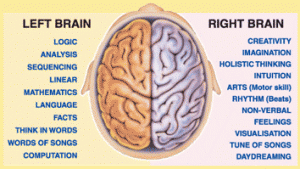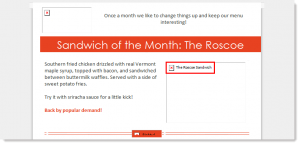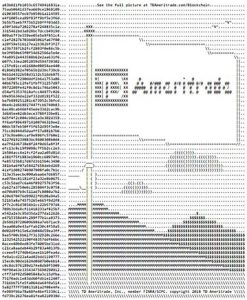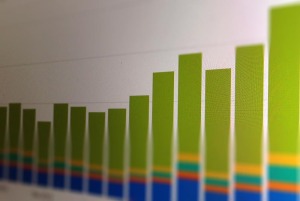A subtle shift has occurred in the language of links that you peruse every day. You don’t see painfully awkward website addresses in parentheses anymore, nor are your web articles interrupted with “Click Here” call-to-action text within their paragraphs.
Hyperlinks have gained subtlety and sophistication. They can be helpful resources and SEO tools. Are you making the most of your hypertext?
Internal & External Hyperlink Inclusion for SEO & Audience Success
 Where should your hyperlinks direct?
Where should your hyperlinks direct?
Utilizing both internal and external hyperlinks is important for your website.
- Internal hyperlinks—or links that direct a user to another page of your website–show your depth. When you take the time to create a lot of well-written content, each piece on a focused topic related to your overall brand, it demonstrates a higher level of expertise. Think of how you can use almost every page of your website as evergreen content. A blog, for example, shouldn’t be written and then forgotten three months later. Keep it accessible by linking to it from other places on your website. (Doing so also adds ranking authority to pages other than your homepage.)
- External hyperlinks–or links that direct a user to a separate website—show that you’re part of a larger conversation and that you are aware of the latest research and/or industry news. References to experts and well-known publications build up your own brand trustworthiness. Links to your social media accounts show your accessibility and your willingness to connect with the community.
Beyond the human audiences, including internal and external hyperlinks is a valuable search engine optimization (SEO) tactic as well. Web crawlers find these links important when accessing a website and considering its placement on search engine results pages (SERPs). Only websites with depth, demonstrated expertise, trustworthiness, and up-to-date materials commonly rank on the front pages of search results. Including internal and external hyperlinks is one step in the right direction.
Hint: Direct your external hyperlinks to open in a new window. This way, a user doesn’t lose your website in the midst of looking at other materials.
Where should hyperlinks appear on your website?
Your homepage is a good start, but go further. A lot of your web pages are probably interrelated. Use hyperlinks to connect them, allowing a user to easily click from place to place as they follow a logical train of thought. “Services” pages can have hyperlinks to well-written content marketing pieces that show more details about a certain topic; “Team” pages can link to press releases, social media accounts, or personal websites; “About Us” pages can link to recent projects in your portfolio. The sky’s the limit.
Wikipedia is a powerful example of hyperlinks in action. Each page has numerous hyperlinks that can lead a viewer down endless rabbit-holes of information. Your website might not be as thorough as this crowd-sourced encyclopedia, but there’s no reason that you can’t be as helpful and intuitive with your hyperlinks.
Hint: Every 6 months (or at least every year) do a hyperlink check-up on your website. Updating your content is a valuable SEO strategy, and integrating additional hyperlinks into older material can be a powerful part of this process.
How can you make the most of hyperlinks?
Well-written content may not always stand out to you, but choppy content often loses readers—human and web-crawling bots alike. Badly included hyperlinks can often be the culprit of rough web writing.
- Never use the domain name itself as the hyperlink. If you want to reference a website, call it by name. For example, write Midlothian Web Solutions, not https://midlothianweb.com.
- Stop writing “click here.” Internet readers are savvy these days. If they see a word or phrase that is highlighted, a different color, or underlined, they know that this is likely a hyperlink. There’s no need to talk down to today’s audiences by pointing out where the links are.
Furthermore, the flow of the communication is interrupted when the “click here” note is included. It shifts the focus to the link rather than the topic at hand. If you’re writing strong informational or entertaining content, keep your readers with you. They already know where to click if they want more.
- Be precise in the words you include in your hyperlink. These words should act as teasers to the content being linked to. It’s the difference between discussing hackers and the not-so-scary side of the hacking world. It’s the difference between net neutrality and how the absence of net neutrality would affect your business. Do you see how the latter example in both sentences gives a much more detailed glimpse of where the click will take you?
These precise words are also important in terms of SEO. If something dictates a link, it is deemed important. Just like page titles and image alternate names, hypertext is an important place to integrate relevant keywords for search engine algorithms.
- Include hyperlinks with a call-to-action (CTA) at the end of a sentence. If you want users to take action, don’t make them go back through a sentence or—worse yet—a paragraph to find the link that they need to take their next steps. For example, don’t write “Sign-up for Kris Spisak’s newsletter for business writing, communications etiquette, and grammar tips galore.” Instead write, “For the latest business writing tips, communications etiquette, and grammar reminders, sign up for Kris Spisak’s newsletter.” Hyperlinks at the end of a sentence enable readers to act right away.
We’ve come a long way from the initial idea of a hyperlink by Dr. Vannevar Bush in 1945 and the coining of the term in the mid-1960s by Ted Nelson, but we cannot forget that it was this basic concept of hyperlinks—these endless connections of data—that brought about the World Wide Web as it came to be and as we know it today.
Of course, creating content on a website has evolved greatly in just the past ten years. Effectively utilizing hyperlinks is only one piece of the greater web communications puzzle, but it is one that is essential on many levels—human and algorithmic alike.
Digital & Social Articles on Business 2 Community(70)




